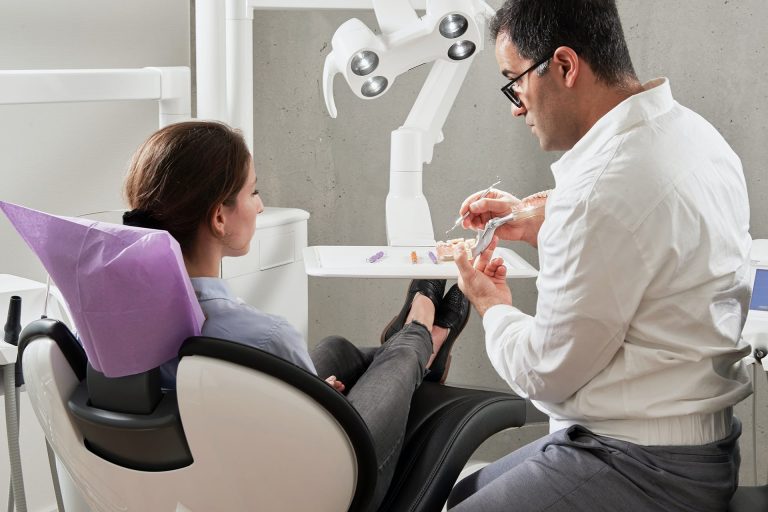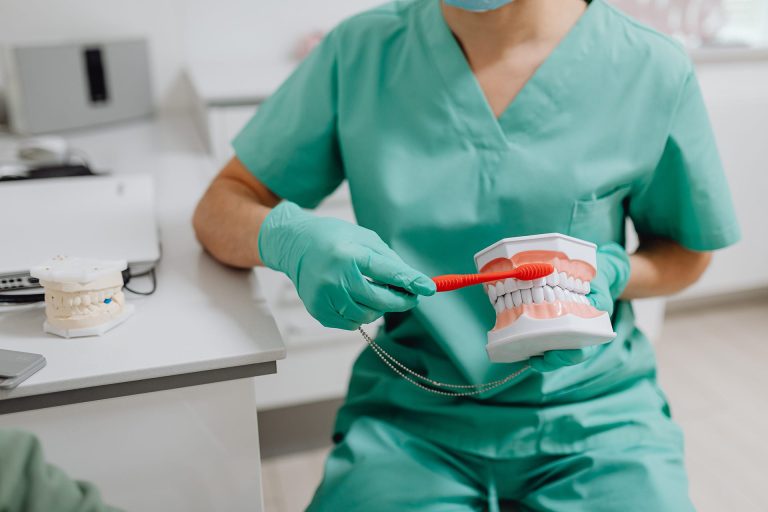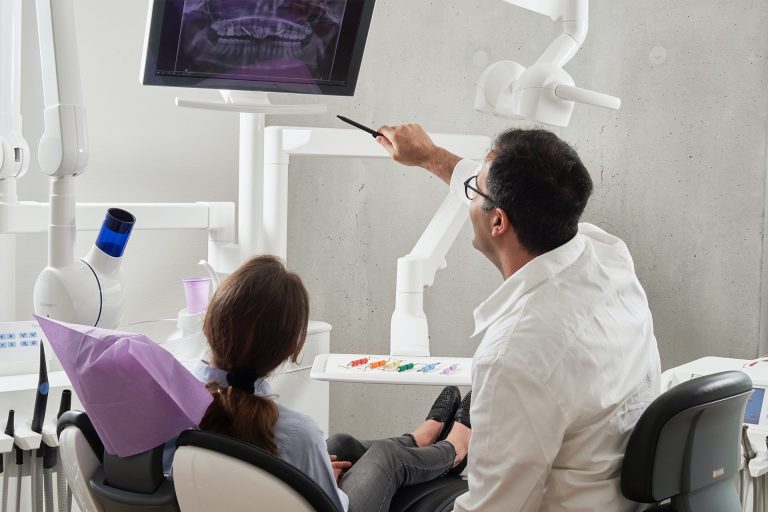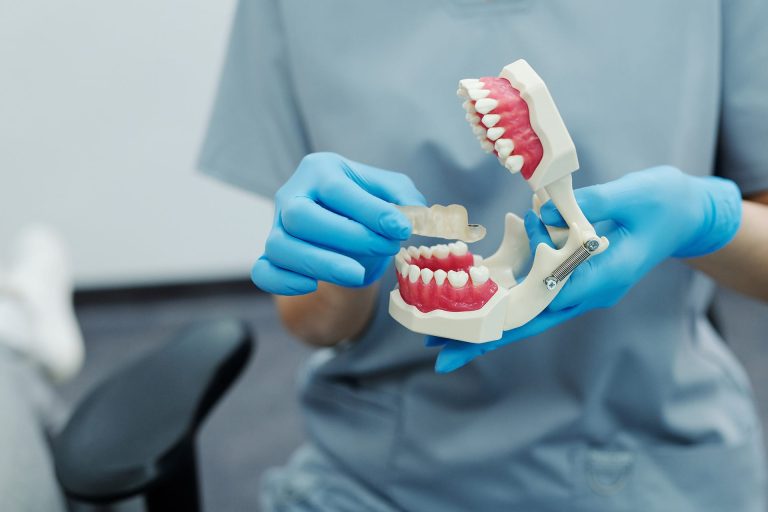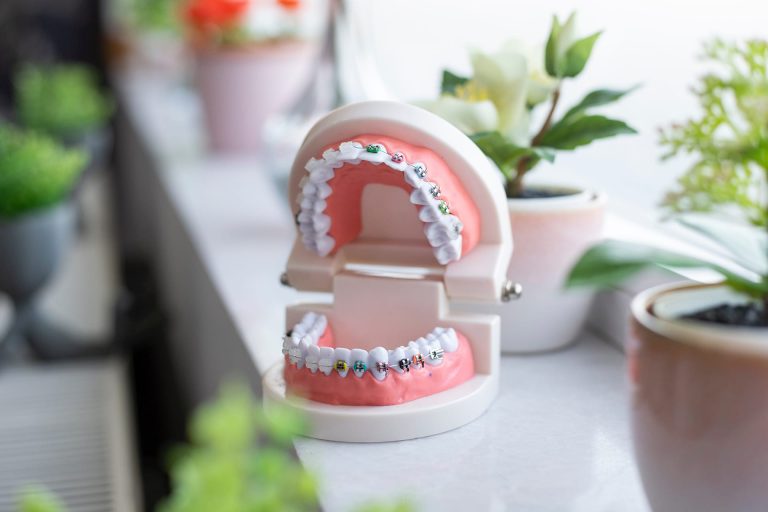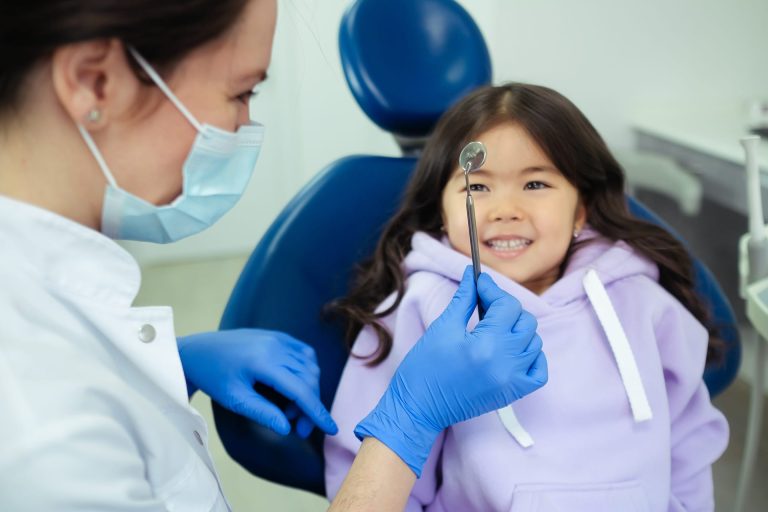Introduction: In the realm of pediatric dentistry, ensuring that the oral health of children and teens is maintained becomes a task of paramount importance for every parent. Drawing from years of experience and numerous success stories, this comprehensive guide, 9 Tips to Keep Kids & Teens Teeth Healthy, aims to demystify the process, offering practical, easily implementable advice to keep their smiles bright and healthy.
Snippet: To maintain optimal oral health in youngsters and adolescents, daily brushing with fluoride toothpaste and flossing are paramount. Regular dental check-ups, a balanced diet, limiting sugary foods, using mouthguards during sports, avoiding tobacco, and teaching correct brushing techniques are requisite.
H2: Understanding the Importance of Dental Health in Kids and Teens
The value of maintaining oral health in children and teenagers cannot be overstated. It goes beyond having a radiant smile; it’s about setting the foundation for a lifetime of healthy habits and overall well-being.
H3: The Role of Baby Teeth in Oral Health
Baby teeth, also known as primary teeth, play a crucial role in a child’s oral health. They not only enable a child to chew food properly and speak clearly but also serve as placeholders for the permanent teeth. If baby teeth are lost prematurely due to decay or injury, the remaining teeth may drift, causing spacing problems for the incoming permanent teeth. Thus, proper care of baby teeth is instrumental in preventing future dental complications.
H3: The Impact of Oral Health on Overall Well-being
Oral health is intrinsically connected to one’s overall health. It plays a significant role in various bodily functions, from digestion to speech. Oral infections can lead to more serious ailments such as heart disease, diabetes, and respiratory diseases. For kids and teens, poor dental health can result in pain, discomfort, and even trouble concentrating in school. Overall, maintaining oral health is imperative for ensuring the overall well-being of children and adolescents.
H3: The Consequences of Neglecting Dental Health
Neglecting dental health can have severe ramifications, especially for kids and teens whose bodies are still developing. Untreated tooth decay can lead to pain, infection, and loss of teeth, which can negatively impact a child’s self-esteem and quality of life. Furthermore, research indicates a correlation between poor oral health and lower school performance and social relationships.
Moreover, poor oral hygiene habits during childhood and adolescence can carry into adulthood, potentially leading to chronic dental problems and costly treatments. Therefore, instilling good dental practices in kids and teens is not merely about preventing cavities—it’s about establishing a lifelong commitment to oral health.
In essence, understanding the importance of dental health in kids and teens is critical. It not only shapes their oral health but can significantly influence their overall health and well-being. Therefore, it’s incumbent upon parents, caregivers, and educators to prioritize and promote good dental hygiene from an early age.
H2: How to Teach Children the Basics of Dental Hygiene
Instilling good dental hygiene habits from a young age is crucial. It not only ensures a healthy and sparkling smile but also keeps dental diseases at bay. This section delves deep into how one can teach children the basics of dental hygiene in a fun and effective way.
H3: Introducing Dental Hygiene at an Early Age
Introducing dental hygiene to children at an early age is paramount. The sooner they understand the importance of maintaining their oral health, the better they can incorporate these habits into their daily routines. Experts recommend introducing children to dental hygiene as young as two years old. At this age, children are more receptive to learning new things and can start understanding the rudimentary aspects of dental hygiene.
Parents can start by showing their children how to hold a toothbrush, explaining the process of brushing, and emphasizing the importance of doing it twice a day. They may also introduce dental health-themed books and videos to foster an early interest in dental hygiene.
H3: The Correct Way to Brush and Floss
Educating children on the correct way to brush and floss is a fundamental part of teaching dental hygiene. Children should be taught to brush their teeth in a circular motion, reaching all corners of their mouth. They should also be instructed to brush for at least two minutes, ensuring every tooth gets cleaned.
Flossing is another integral part of dental hygiene that children must learn. It can remove food particles and plaque that a toothbrush may not reach. Parents should guide their children on how to hold the floss correctly, how to move it between their teeth, and the importance of flossing at least once a day.
H3: Making Dental Hygiene Fun for Kids
Making dental hygiene fun can encourage children to maintain their oral health. This can be done through various creative means. For example, parents can use toothbrushes with their children’s favorite cartoon characters or toothpaste that changes color when used correctly.
Interactive dental hygiene games can also be an excellent way to make dental hygiene fun. These can range from racing to see who can brush their teeth the longest to playing dentist with stuffed animals.
Another way to make dental hygiene fun is to reward children for maintaining good dental hygiene. This could be in the form of stickers, small toys, or extra playtime.
Overall, teaching children the basics of dental hygiene is a vital task that should be approached with meticulousness and creativity. It’s about creating a balance between educating them on the importance of maintaining oral health and making the process enjoyable for them.
H2: The Role of Diet in Maintaining Dental Health
Diet plays a crucial role in maintaining dental health. Not only does it provide the nutrients needed for the strength and resilience of teeth and gums, but it also influences the balance of bacteria in the mouth, which can impact oral health. Eating a balanced diet can help maintain the integrity of the oral cavity, preventing diseases such as tooth decay and gum disease.
H3: Foods that Promote Dental Health
Certain foods are particularly beneficial for dental health. Dairy products such as milk, cheese, and yogurt are rich in calcium and phosphorus, which are essential for the health and strength of teeth. They also contain casein, a protein that helps neutralize harmful acids in the mouth.
Crunchy fruits and vegetables, such as apples, carrots, and celery, can also promote oral health by stimulating the production of saliva. Saliva is the body’s natural defense against tooth decay, as it neutralizes acidic substances and helps wash away food particles.
Other foods that are beneficial for dental health include those rich in antioxidants, such as berries, beans, and nuts. Antioxidants help protect gums and other tissues from cellular damage and bacterial infection.
H3: Foods and Drinks to Avoid
On the other hand, certain foods and beverages are detrimental to oral health. Sugary foods and drinks, such as candies, sodas, and pastries, contribute to the formation of plaque and tooth decay by feeding harmful bacteria in the mouth.
Acidic foods and drinks, such as citrus fruits and wine, can also damage the teeth. They erode the enamel, the outermost layer of the tooth, making it more susceptible to decay.
Moreover, sticky and starchy foods, such as potato chips and dried fruits, can be harmful. They tend to stick to the teeth, providing a breeding ground for bacteria.
H3: The Importance of Regular Meals and Snacks
The timing and frequency of meals and snacks can also impact oral health. Eating regularly helps maintain a steady flow of saliva, preventing a dry mouth, which is a common cause of tooth decay and gum disease.
However, snacking constantly throughout the day can be harmful, as it constantly exposes the teeth to acids. It is recommended to limit snacking and to opt for healthy snacks, such as fruits and vegetables, rather than sugary or starchy ones.
Overall, diet plays a key role in maintaining dental health. By eating a balanced diet, avoiding harmful foods and beverages, and eating at regular intervals, one can maintain the health and integrity of their oral cavity.
H2: The Importance of Regular Dental Check-ups
Regular dental check-ups are indispensable to maintaining a healthy smile, and they go far beyond just ensuring a bright and confident smile. They play a pivotal role in overall health. For instance, consistent dental check-ups can detect oral health issues before they become serious or even irreversible. From cavities to gum diseases, regular examinations help dentists spot these issues early on and provide timely treatment.
Moreover, many systemic diseases like diabetes or heart disease often have oral manifestations. Thus, a dentist could potentially be the first healthcare provider to diagnose such health problems. Regular dental check-ups, therefore, serve as a preventative healthcare measure, mitigating potential health risks.
H3: When to Start Regular Dental Check-ups
The question of when to initiate regular dental check-ups often baffles many. Experts recommend that the first dental check-up should occur when the child’s first tooth appears or no later than his or her first birthday. Starting dental check-ups at an early age is crucial as it helps the dentist detect early signs of dental issues such as baby bottle tooth decay or issues related to pacifier use.
Moreover, early dental visits help familiarize the child with the dentist’s office, making them less likely to experience fear or anxiety during future visits. Overall, early and regular dental check-ups lay a solid foundation for excellent oral health in the future.
H3: What to Expect During a Dental Check-up
A dental check-up is a comprehensive process that involves several steps to ensure the overall health of the mouth. Initially, the dental hygienist performs a thorough cleaning of the teeth, removing any tartar or plaque build-up, followed by polishing the teeth.
Subsequently, the dentist conducts a comprehensive examination of the teeth, gums, and mouth. They may also use X-rays to detect any hidden problems in the teeth or jaw. If any issues are identified, the dentist will discuss these with the patient and propose a treatment plan.
H3: Dealing with Dental Anxiety in Children
Dental anxiety is common among children. However, there are several strategies to help alleviate this fear. One method is to use positive language when discussing dental visits, and to avoid using any words that might cause fear or anxiety.
Furthermore, it’s advisable to prepare children for what to expect during a dental check-up. This can be accomplished through role-playing dental visits at home or reading books about visiting the dentist. In some cases, a dentist may recommend mild sedation to help a child relax during their appointment.
Overall, the importance of regular dental check-ups cannot be overstated. From the early detection of oral health issues to the prevention of systemic diseases, these check-ups are crucial for maintaining overall health. Moreover, creating a positive dental check-up experience for children can help mitigate dental anxiety and establish healthy oral care habits from an early age.
H2: The Particular Challenges of Dental Health in Teens
The dental health of teenagers faces unique challenges, largely due to lifestyle choices and physiological changes. The care for this demographic requires a specialized understanding of these challenges to ensure optimal oral health.
H3: The Impact of Hormonal Changes on Oral Health
One clear factor that significantly affects the dental health of teenagers is hormonal changes. With puberty comes a surge of hormones, such as estrogen and progesterone, which can amplify the body’s reaction to plaque and other oral bacteria. This heightened reaction can lead to conditions like gingivitis, characterized by red, swollen, and bleeding gums.
In addition to gingivitis, hormonal fluctuations can cause an increase in mucin, a protein in saliva that assists in the formation of dental plaque. Consequently, teenagers are at a higher risk of developing cavities and other dental issues. Dental health professionals need to be aware of these hormonal changes to provide the appropriate preventative care and treatment.
H3: The Dangers of Teen Trends like Piercings and Sugary Drinks
Teenage years also bring about trends and habits that can be detrimental to dental health. Oral piercings, for instance, can cause a myriad of complications. These include chipped or cracked teeth, nerve damage, and infections. Piercings can also interfere with regular oral functions like speaking and eating.
The consumption of sugary drinks is another harmful trend prevalent among teenagers. These beverages contribute to tooth decay and erosion, as the sugar acts as a food source for harmful oral bacteria, leading to the production of acids that attack tooth enamel. The high acidity levels in most sugary drinks can also directly cause enamel erosion.
H3: The Role of Orthodontics in Teen Dental Health
Orthodontics plays a pivotal role in teen dental health. Most teenagers have orthodontic treatments like braces to correct malocclusions or misaligned teeth. While these treatments are beneficial for long-term dental health, they also present short-term challenges. Braces, for example, can make teeth cleaning more difficult, increasing the risk of plaque buildup and gum disease.
Overall, dental health in teenagers is a complex area that demands specialized attention and care. Understanding the significant impact of hormonal changes, being aware of the dangers of certain teen trends, and acknowledging the role of orthodontics can all contribute to improved dental health strategies for this demographic. It is crucial that dental health professionals, teenagers, and their parents work collaboratively to ensure optimal oral health during these formative years.
H2: Preventing and Dealing with Common Dental Problems
The journey to maintaining optimal dental health can be fraught with various challenges. However, understanding these common issues, their causes and appropriate prevention methods can make the process significantly easier. This section will explore three common dental problems: cavities, dental emergencies, and orthodontic issues.
H3: Cavities and How to Prevent Them
Cavities, also known as dental caries or tooth decay, are among the most prevalent dental issues across the globe. They occur when the bacteria in the mouth convert sugars and starches into acids that erode the tooth’s enamel, leading to holes in the teeth.
Preventing cavities primarily involves meticulous oral hygiene. Regular brushing, using fluoride toothpaste, helps remove food debris and plaque, thus reducing the bacteria in the mouth. Flossing is also crucial as it removes plaque and food particles from areas that a toothbrush cannot reach. Regular dental check-ups enable early detection of cavities and intervention before they become problematic.
In addition to oral hygiene, dietary habits play a pivotal role in cavity prevention. Limiting the intake of sugary and starchy foods and drinks, especially between meals, can significantly decrease the risk of cavities.
H3: What to Do in Case of a Dental Emergency
A dental emergency can strike at any time, often resulting in severe discomfort and distress. Typical dental emergencies include toothaches, broken or knocked-out teeth, lost fillings or crowns, and abscesses.
In case of a dental emergency, it’s crucial to contact a dental professional immediately. They can provide appropriate guidance and arrange an emergency appointment if necessary. While waiting for professional help, simple home remedies can alleviate pain and prevent further damage. For instance, rinsing the mouth with warm water can soothe a toothache, while a cold compress can reduce swelling in case of trauma.
It should be noted that while these measures can provide temporary relief, they are not substitutes for professional dental care.
H3: Dealing with Braces and Other Orthodontic Issues
Orthodontic issues, including misaligned teeth and bite problems, are common in both children and adults. They are typically addressed using braces, aligners, retainers, or other orthodontic appliances.
Dealing with these appliances can be challenging at first. They may cause discomfort and complicate oral hygiene. However, with appropriate care and maintenance, they can effectively correct orthodontic issues and improve dental health.
It’s vital to maintain excellent oral hygiene when using orthodontic appliances. Brushing after every meal and using interdental brushes or floss can help prevent food particles from getting stuck and causing decay or gum disease. Regular visits to the orthodontist are also crucial for adjustments and monitoring progress.
Overall, dealing with common dental problems involves a comprehensive approach, encompassing regular oral hygiene, a balanced diet, prompt response to dental emergencies, and proper care of orthodontic appliances. While challenges may arise, they are surmountable with knowledge, diligence, and regular professional dental care.
H2: Instilling Long-Term Dental Habits in Kids and Teens
Ensuring lifelong dental health in children and adolescents involves more than merely teaching them how to brush and floss. It’s about instilling long-term dental habits that can last a lifetime. This process requires commitment, patience, and a strategic approach from parents and caregivers.
H3: The Role of Parents and Caregivers
Parents and caregivers play a pivotal role in shaping a child’s dental health habits. They serve as the child’s first teachers, demonstrating the correct way to brush, floss, and care for their teeth. Parents and caregivers, through their actions and attitudes, can also influence a child’s perception about dental health.
For instance, if they express fear or anxiety about their dental appointments, it’s likely that the child will develop a similar fear. On the other hand, if they portray dental care as a positive and essential part of overall health, the child is likely to adopt a similar attitude.
H3: Using Positive Reinforcement to Encourage Good Habits
Positive reinforcement is a powerful tool that can be used to encourage good dental habits in children and adolescents. This strategy involves rewarding the child for exhibiting desired behaviors, thereby increasing the likelihood of these behaviors being repeated in the future.
Rewards do not necessarily have to be materialistic or large. Simple acts such as praising the child for brushing their teeth without being reminded, or giving them a sticker or an extra bedtime story, can go a long way in reinforcing good dental habits.
H3: The Long-Term Benefits of Good Dental Health Habits
Good dental health habits are not just about avoiding cavities or maintaining a beautiful smile. They are closely linked to overall health and well-being. Poor oral health can lead to a variety of health complications, including heart disease, diabetes, and respiratory infections.
By instilling good dental habits in children and adolescents, parents and caregivers can set them on a path towards a healthier future. Good dental habits can help prevent oral diseases, improve self-esteem, and contribute to a better quality of life.
Overall, the importance of instilling long-term dental habits in kids and teens cannot be overemphasized. It requires a concerted effort from parents and caregivers, the effective use of positive reinforcement, and an understanding of the long-term benefits of good dental health. By taking these steps, it is possible to ensure that children and adolescents maintain good oral health throughout their lives.
H2: Conclusion
Implementing the nine tips to maintain oral health in kids and teens can significantly impact their overall well-being and confidence. Through consistent efforts, such as regular dental check-ups, balanced diet, and proper brushing habits, parents can ensure their children embark on the journey of life with a radiant smile. It’s a worthy investment that will reap dividends in their self-esteem and health for years to come.
Key-takeaways:
1. The importance of oral health in children and teens extends beyond aesthetics, contributing significantly to their overall health and well-being.
2. Early introduction of dental hygiene practices, coupled with making the process enjoyable, is instrumental in instilling lifelong dental habits.
3. A balanced diet, rich in calcium, phosphorus, and antioxidants, plays a vital role in maintaining dental health.
4. Regular dental check-ups are crucial, not only for detecting oral health issues but also for potentially diagnosing systemic diseases.
5. Understanding the unique challenges faced by teenagers, such as hormonal changes and trends like oral piercings, can help tailor dental health strategies for this demographic.
“Meta description: Discover expert advice with ‘9 Tips to Keep Kids & Teens Teeth Healthy,’ a comprehensive guide to instill lifelong dental hygiene habits in the younger generation.”

